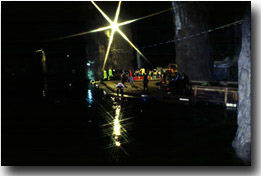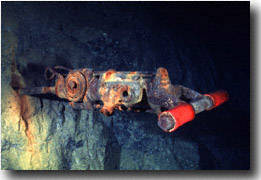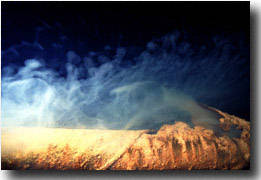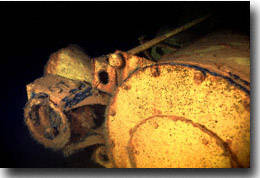Despite its beauty, crystal
clear water and constant conditions, Bonne Terre Mine
still remains virtually unknown to the international dive
community. It offers divers who have "been there and
done that" something truly different. Though
primarily dove by local divers seeking alternatives to
murky mid-west lake waters and cold winters, it is sure
to soon be recognized as the world class dive attraction
it is and undoubtedly will become a mecca for adventurous
divers.
Accommodations offered by
Doug and Cathy Goergens are no less unique. A renovated
railroad depot has been converted to a quaint bed and
breakfast with reasonably priced rooms. Several railroad
cars and a train caboose next to the historic Depot have
been outfitted with very comfortable furnishings,
rivaling the best accommodations in town for those divers
lucky enough to reserve one.
Deep Earth Diving, a phrase
coined for the mine, is very safe for the divers of all
skill levels thanks to the procedures established by Doug
and fun due to the exceptional dive staff who assure
divers are comfortable. Divers new to the mine are given
an extensive briefing before descent into the mine. In
fact, the mine is the first choice for divers in the area
seeking their open water certification thanks to the
predicable conditions.
|



